
Rediscovering Japan

Rediscovering Japan
Travel (Ooita Part 1 (Hita, Nakatsu, Usa, Kunisaki))

by tomizuta
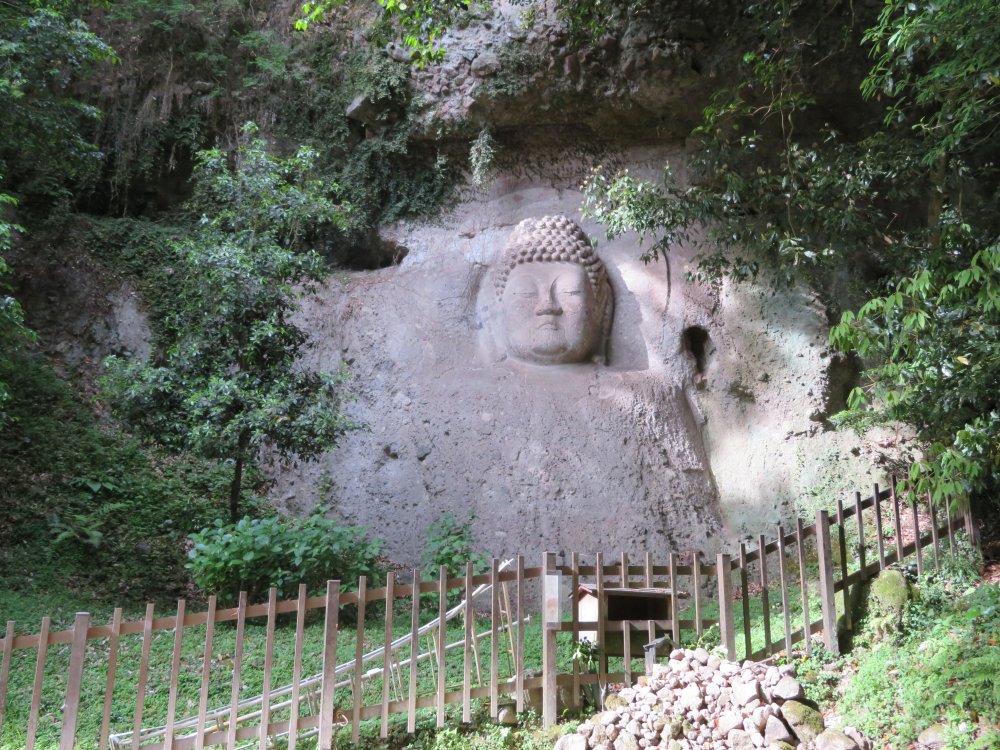
Kumano-magaibutsu. Ooita has a rich religious stone culture.
I had only visited Ooita Prefecture once about thirty years ago to a tourist spot called Aonodoumon close to the border with Fukuoka Prefecture. This is a tunnel through the cliffs of Yabakei Valley completed in the 18th century by a Buddhist monk and his team to provide a safer as well as quicker route for travelers. Other than that I knew only that Ooita had numerous onsens such as Beppu and Yufuin, a history of Shinto and Buddhism fusion and some famous shouchuu (alcoholic spirits usually distilled from barley or sweet potatoes), so I set out on a five day tour to really visit Ooita for the first time. The areas of interest for me were, the historic district of Mameda in Hita City, Nakatsu Castle, Usa-jinguu, Fukiji-oodou (Grand building of Fuki Temple), the stone Buddhas of Usuki and the historic castle town (joukamachi) of Kitsuki.
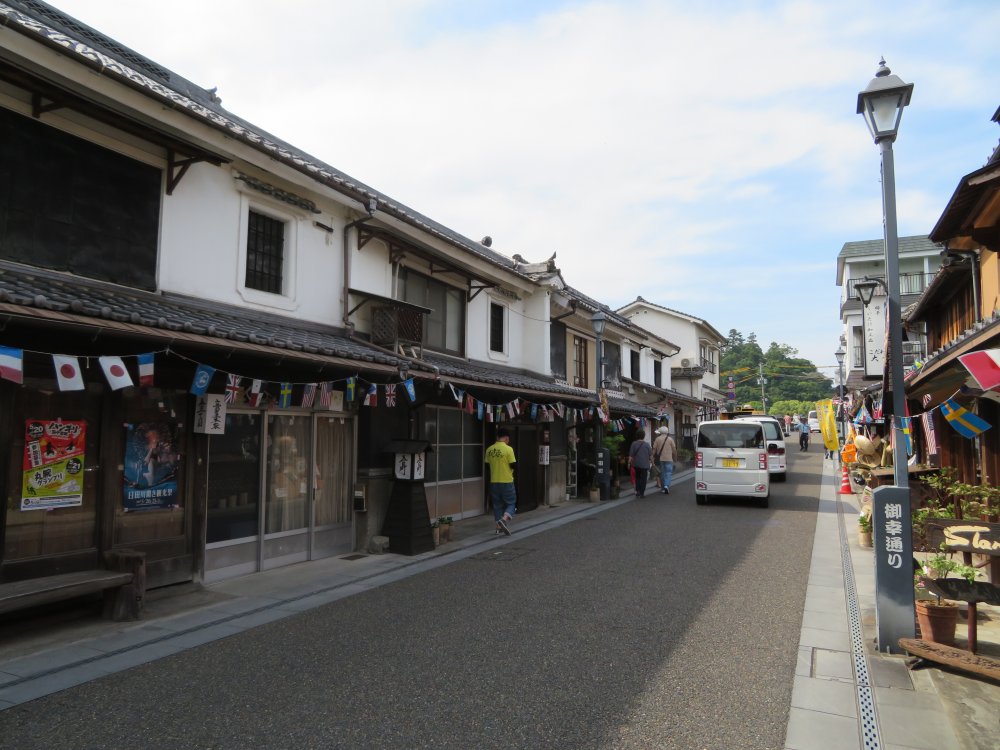
The high street of Mameda district in Hita City. Tha Jinya must have been in front.
Hita is in a basin surrounded by mountains close to the north western border
with Fukuoka Prefecture. It has a typical inland climate with hot summers
and cold winters. Indeed in the evening TV news, I learned that Hita had
the hottest temperature in Japan of above 30 degrees centigrade on the
day we visited in mid-May. Much water flows into the basin from the surrounding
mountains. Archaeological finds indicate that people had likely settled
in this area in the first to third centuries. Hita was under the rule of
the Ookura family till the middle of the 16th century. Following that it
came under custody of numerous feudal lords starting with the Ootomo family
that I’ll talk about later, until it became a Tenryou under direct control
of the Tokugawa Shougun like Kurashiki.
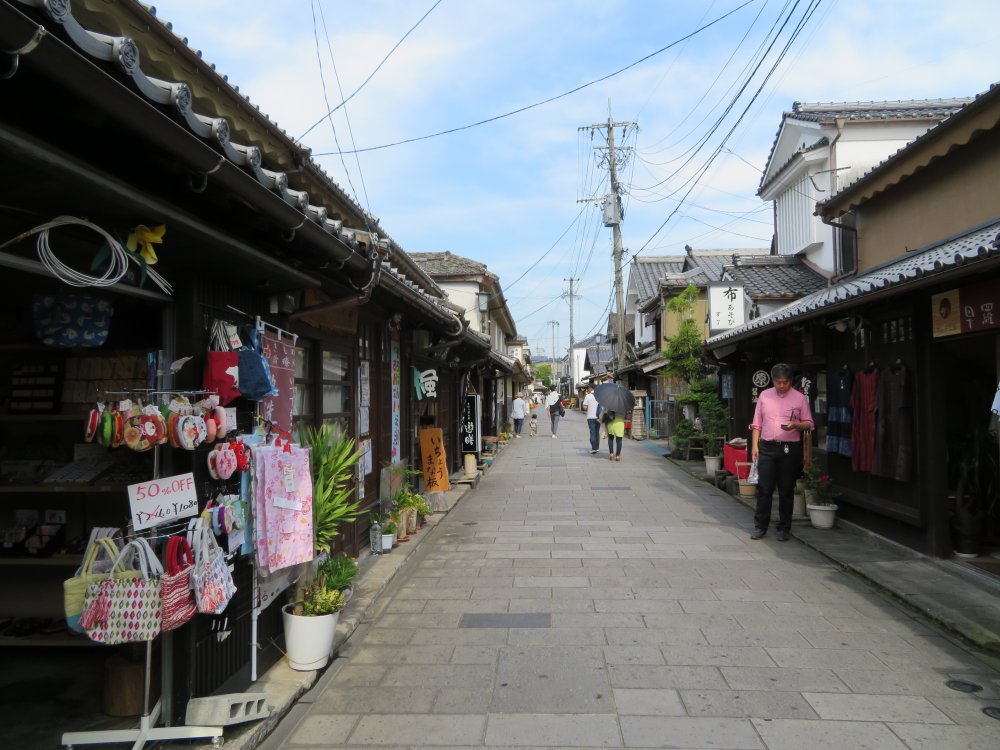
The alleys stemming from high street are equally interesting.
Mameda town is the castle township of Nagayama Castle and later the Hita Jinya (Governor’s offices of a Tenryou). The historic township is composed of two main streets running north to south for about three hundred meters and five streets of less than a hundred meters running east west connecting the main streets. The whole area was designated as an Important Preservation District for Groups of Historic Buildings of merchants.
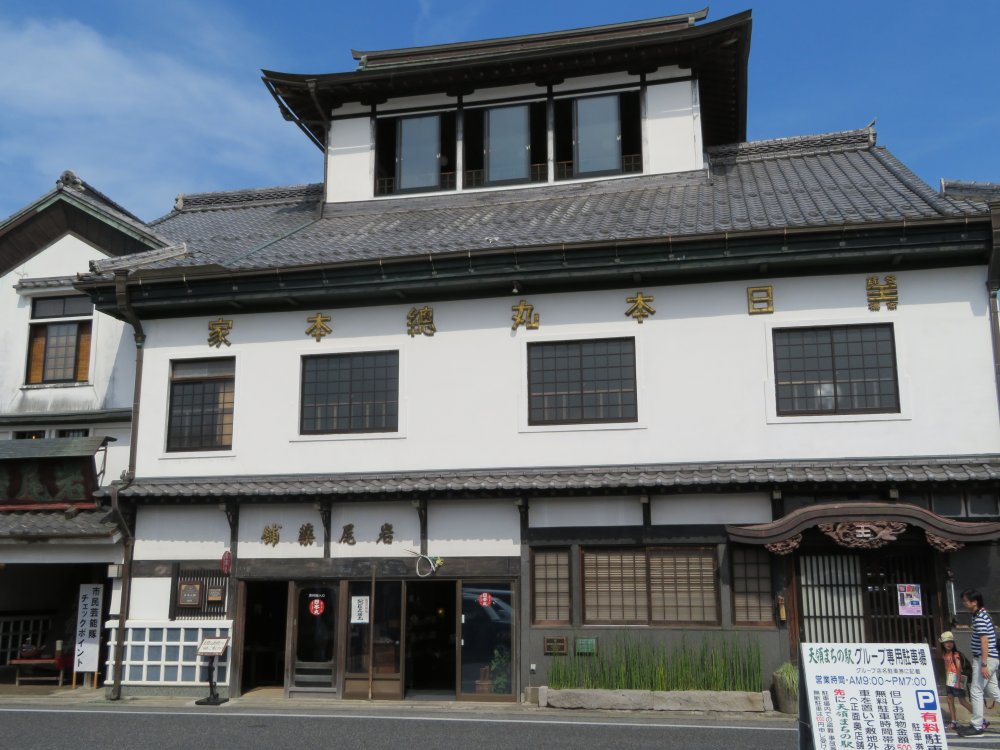
Nihongan was one of the most famous medicines in the Meiji era.
Hita had many wealthy merchants. I do not know how they initially generated their wealth, but suspect it came from trading of pine wood and bamboos, and candle wax from wax trees that all come from its rich forests. The merchants expanded their wealth by lending to the feudal lords. These funds were called Hitagane (Hita money).
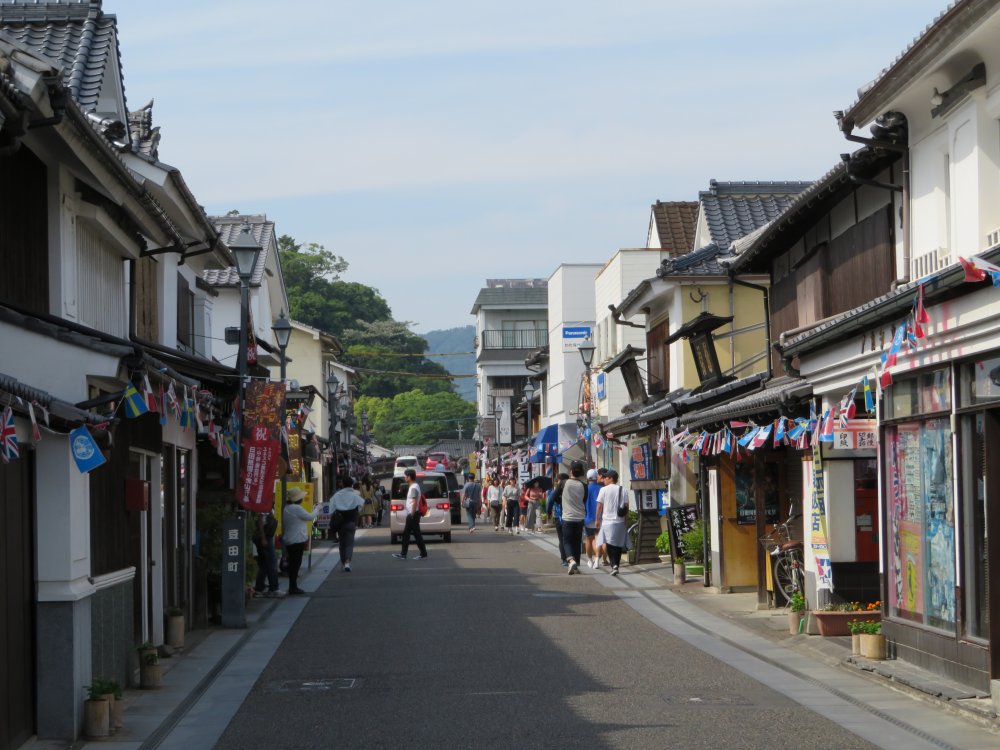
We were invited into a local soy sauce shop displaying hina dolls just behind the red flag on the left.
We were strolling the streets when we were invited into a local soy sauce shop. In the back of the shop they are displaying over three thousand hina dolls. Usually hina dolls are only displayed in March (see article on Hinamatsuri in “Season (March)”) but here the dolls are on display all year round. We were told that on that day admission was free (the normal admission fee is three hundred yen). What we found was certainly worth more than the ordinary admission fee. Most displays at local Hinamatsuri events held to stimulate the economy are from recent years. There are very few from earlier than the Taishou era that survived the WWII period. But here there were abundant displays of the highest standards from the Edo era. We learned that they had been brought to the district from Kyoto and Edo by the wealthy merchants. This was symbolic of how business had flourished in the Hita district.
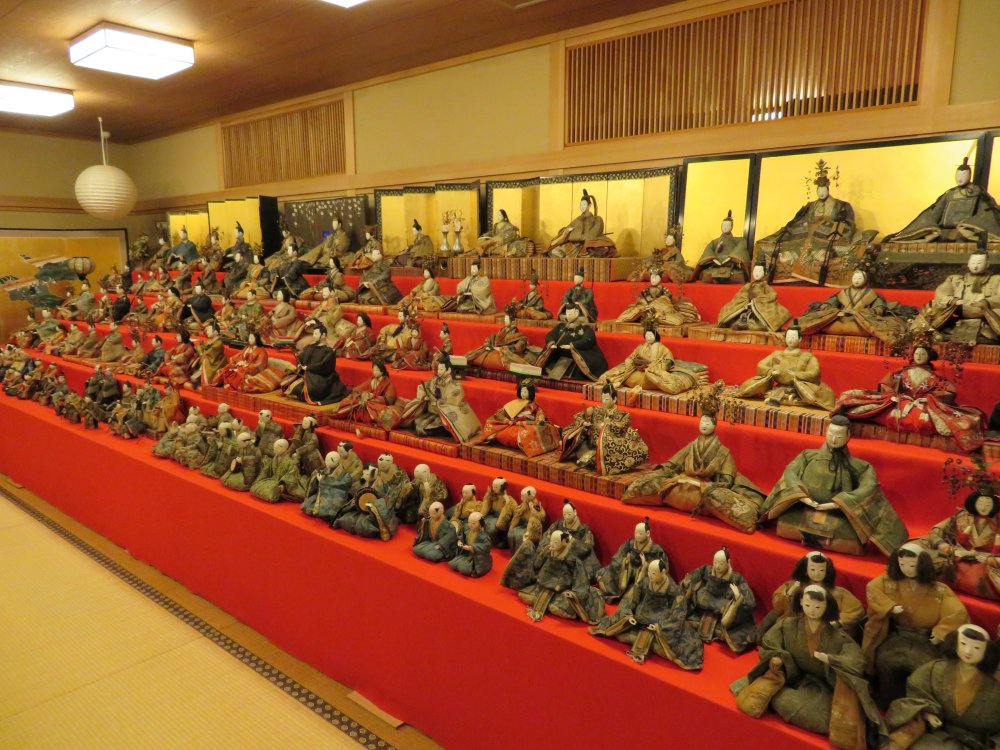
We were amazed to see so many splendid hina dolls from the Edo era.
We learned that Hita was the pioneer to start a Hinamatsuri event, and pleased to note the efforts of the local community to preserve its historic streets. All electricity poles had been taken away for instance. We also took a look inside the Kusano family residence. The family had developed by wax trading and lending. The oldest part of the vast residence was built in the early 18th century. Unfortunately the outside of the building was scaffolded for refurbishment and no photography was allowed inside.
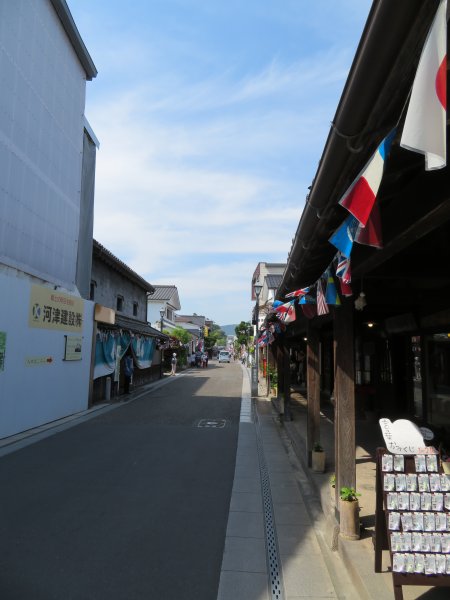
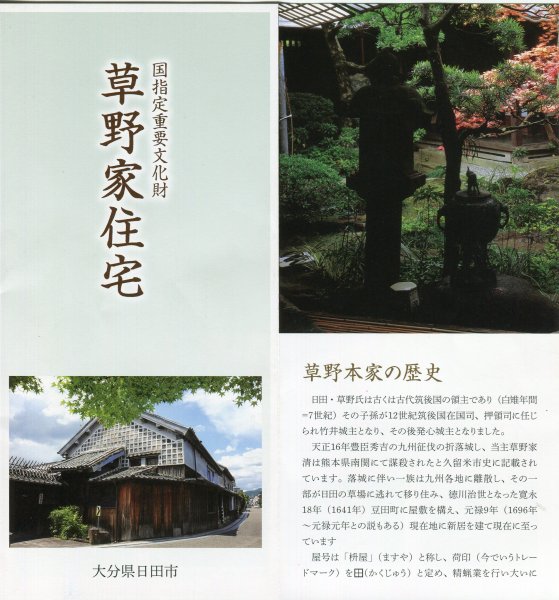
The Kusano residence was undergoing refurbishment (left) Kusano residence and inner garden from their pamphlet (right)
We then travelled about thirty kilometers north to reach our next destination,
Nakatsu Castle. I had had an interest in the castle as it was originally
founded by Josui Kuroda who was advisor to Hideyoshi Toyotomi that established
nation-wide rule in 1590. Kuroda remains in history as one of the most
astute advisors of Japan. What remains today are only the stone foundations
and ruins. The magnificent keep was built in 1964 but I understand that
it may not be a true replica of the original. The keep is now a museum
displaying objects from the Okudaira family who were the feudal lords of
Nakatsu till the Meiji Restoration. We went up the keep to the top floor
to command a good view from the top.
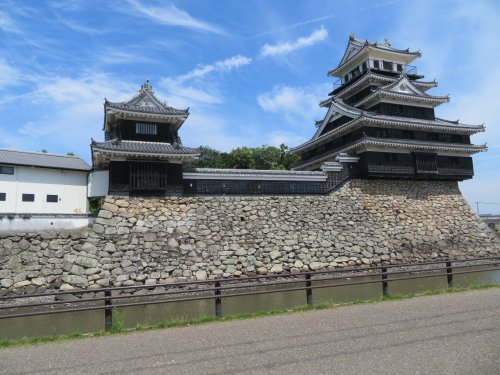
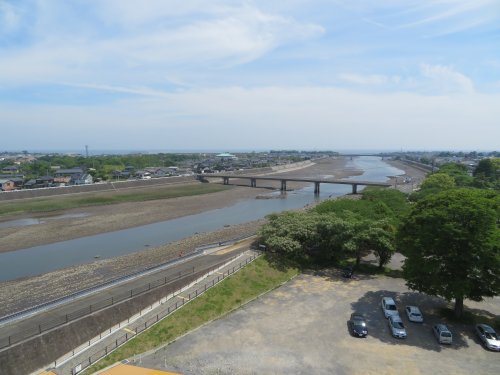
Nakatsu Castle (left) and the view of the river mouth and ocean from the top of the keep (right)
From Nakatsu, we went east to Usa City. Usa is famous for Usa-jinguu, but before that we thought it would be a good idea to visit Ooita Prefectural Museum of History opened in 1998 to get some background knowledge of the places we intended to visit. It certainly was worth the three hundred ten yen admission fee. In addition to a full size replica of Fukiji-oodou with full explanation, the museum provides well organized sections of the history as well as cultural and religious background of Ooita Prefecture. With this background knowledge, we first visited Usa-jinguu.
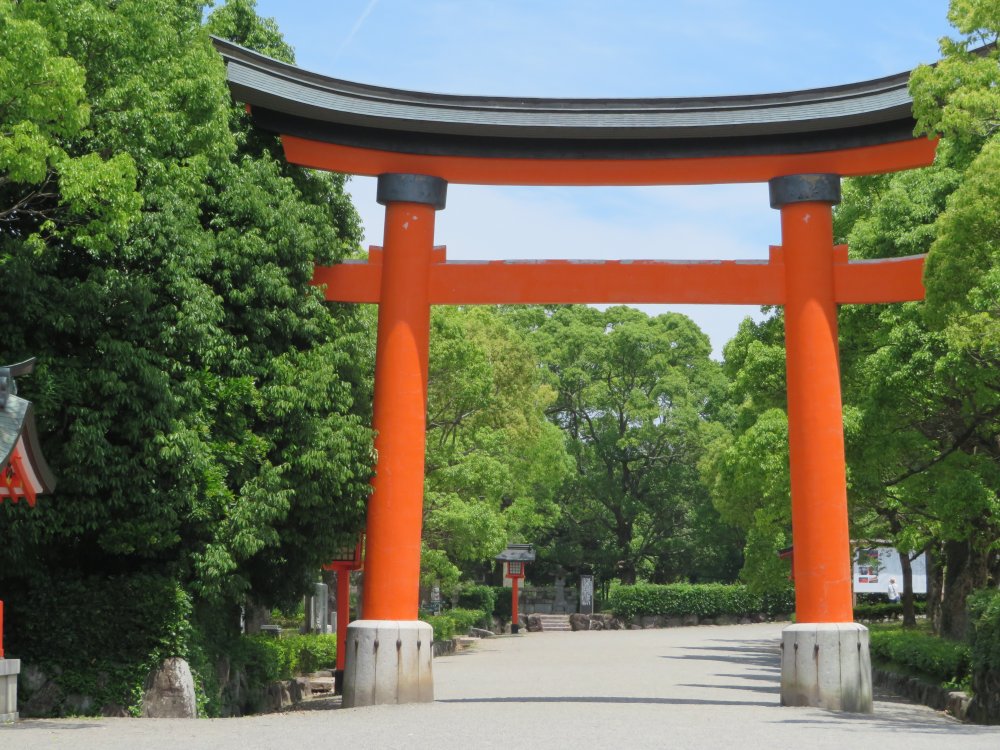
The grand torii entrance gate of Usa-jinguu
In the process of the establishment of the Yamato Court which was the start
of the monarchy of Japan, the Yamato Court was confronted by the Emishi
people in the north and the Hayato people in the south. Shougun was a title
bestowed to a champion to conquer these people. Tokugawa Shougun was a
title bestowed by the Emperor to the Tokugawas to authorize them to govern
on their behalf. I understand that an Emperor’s army led by a Shougun was
sent to Kyuushuu to settle a revolt of the Hayato in the early 8th century.
On their way they prayed for victory in Usa to God Yawata who is believed
to be the incarnation of Emperor Oujin. When the wish was granted, the Yamato Court ordered the construction of
Usa-jinguu to worship God Yawata in 725. Shortly thereafter shrines to
worship Goddess Hime (Daughter of Goddess Amaterasu and protector of the
sea) and Empress Jinguu (Mother of Emperor Oujin, a lady warrior) were
added, so in total three deities are worshipped.
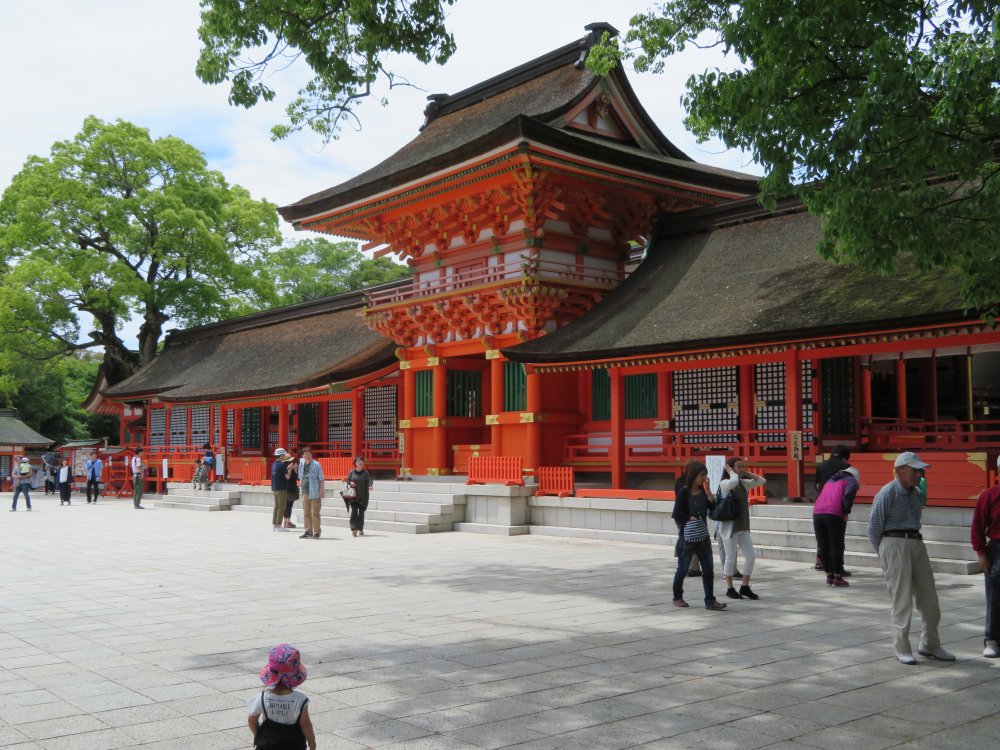
The main honden with its three shrines to worship the three deities
So highly respected was God Yawata, that shrines to worship him was created
in all around Japan. It is easy to understand why the samurai and feudal
lords built shrines to pray for victory to God Yawata. As such, there are
over forty thousand Yawata shrines in Japan. Of these, Iwashimizu-hachimanguu
in Kyoto and Tsuruoka-hachimanguu in Kamakura are the most prominent. Hachiman
in Chinese characters are the same as Yawata, literally meaning six banners.
Legend says that God Yawata repented the killings of the Hayato and prayed
to Buddha for salvation. Although demolished after the Meiji Restoration,
a Buddhist temple Mirokuji temple had stood within Usa-jinguu. This we
learnt was perhaps the earliest manifestation of Shintou-Buddhism fusion.
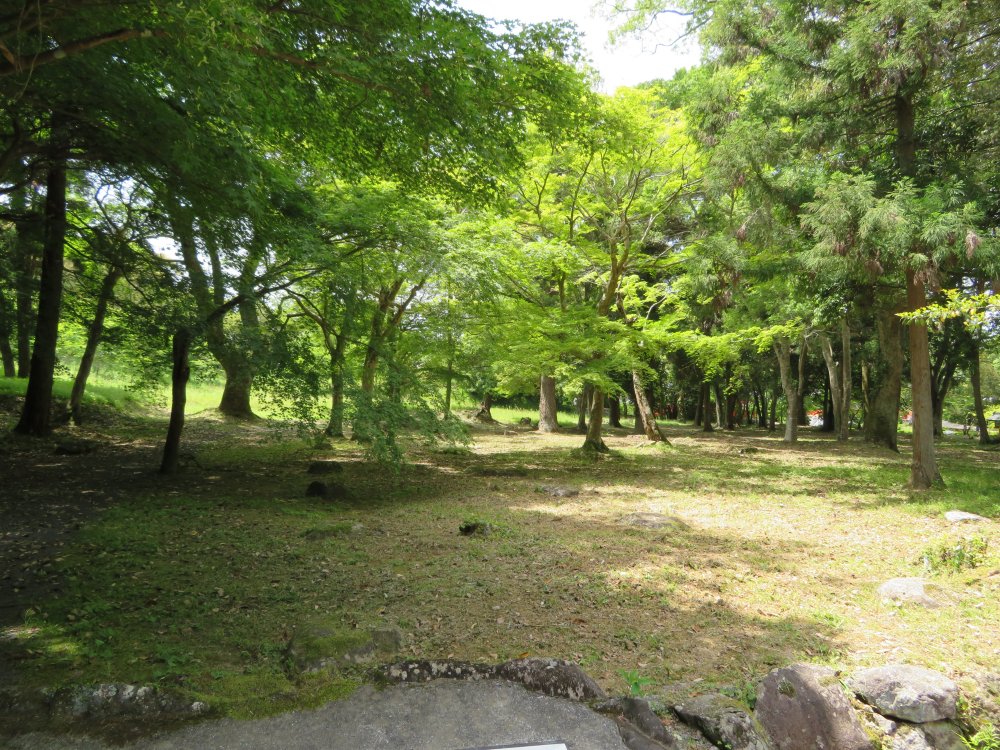
This is where Mirokuji Temple stood.
Kunisaki Peninsular on the north eastern part of Ooita prefecture was initially
a place with many Shintou mountain worship sites. Under influence of the
Shintou-Buddhism fusion of Usa-jinguu, numerous Buddhist temples were built
in the mountains. Combined with the practice of pursuing Shingon (true
word) through spiritual training and stoicism in the mountains as encouraged
by esoteric Buddhism, Kunisaki Peninsular saw the development of a very
unique religious culture. Ooita is famous for its rich stone culture, with
many stone buddhas and towers built in the mountains. From Usa-jinguu,
we drove further east for about thirty minutes into the mountains of Kunisaki
Peninsular. Our first stop was to visit Fukiji-oodou (Grand building of
Fuki Temple). Fukiji-oodou is a temple building built in the late Heian
period, most likely in the 12th century. It is one of the few buildings
surviving from the Heian period outside of the Kinki area and is designated
as a national treasure. It was built in a time that people believed we
were coming to the end of the world and temples and gardens depicting the
paradise thought to exist in the west were built. Classic examples are
Uji-byoudouin in Kyoto designated as a World Heritage and Shiramizu-amidadou
in Fukushima Prefecture as a national treasure. Fukiji-oodou itself is
a small square building that has lost its luster through the many years.
You can go inside to view the wooden statue of Amidanyorai that Buddha
taught would lead common people to paradise with some difficulty as there
is very little light inside. I certainly would recommend you see the replica
at Ooita Prefectural Museum of History in Usa beforehand to get a feel
of how grand it must have originally been.

There were many tourists visiting Fukiji-oodou.
The last place to visit on our first day was Kumano-magaibutsu (stone Buddhist
statues carved on rock) not far from Fukiji-oodou. This also dates back
to the late Heian period, and is the largest of the numerous stone statues
in the Kunisaki Peninsular. There are two statues about seven meters tall.
You need to go up the steep rocky and uneven steps for about three hundred
meters from the car park to view these statues. It was a very warm day
for May, and we were sweating all over by the time we got there. But it
certainly was worth the climb as the statues are quite awesome. It made
me wonder how long it must have taken to complete this in the middle of
the mountains around nine hundred years ago. According to the homepage
of Taizouji Temple of the Buddhist Tendai sect which sits at the entrance point to Kumano-magaibutsu it is estimated as four to five years.
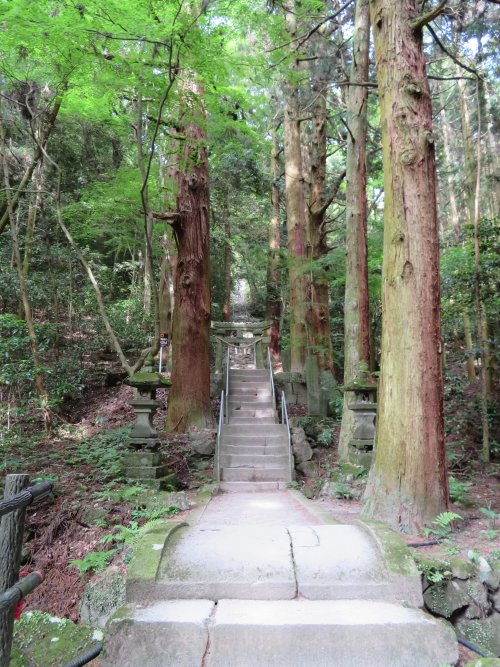
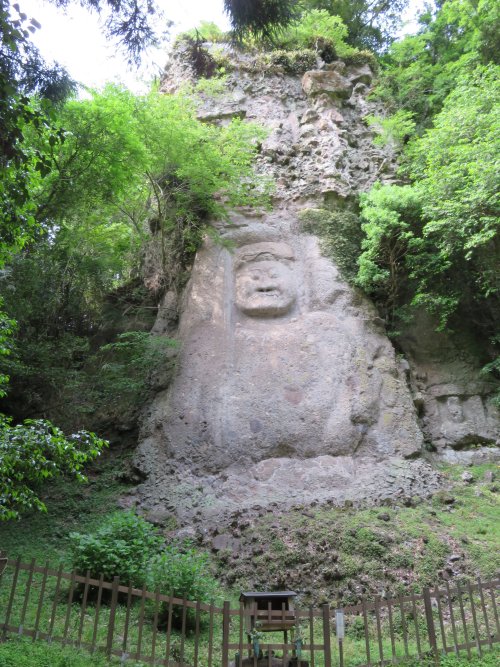
The steep climb (left) leading to the magaibutsu (right)
Ooita is famous for its shouchuu (distilled barley or sweet potato alcoholic
beverage. But on this trip I learnt that there are some good sake as well.
I would like to introduce Sansui brewed in Hita.
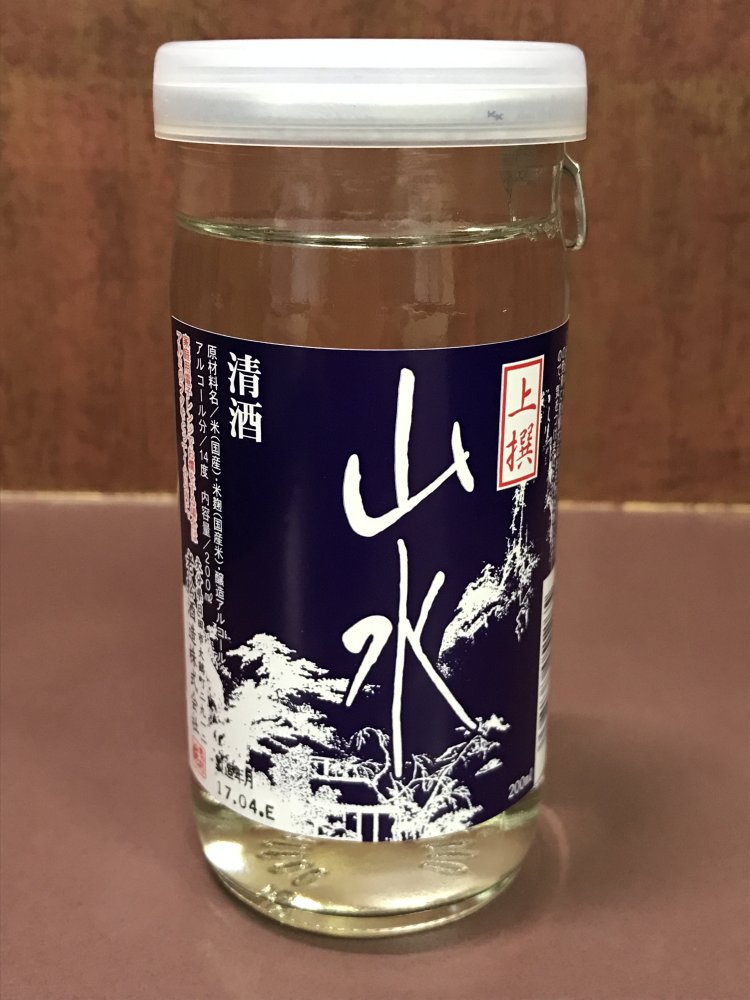
A 200 milliliters bottle of Sansui. Judging from the material it is a honjouzou.